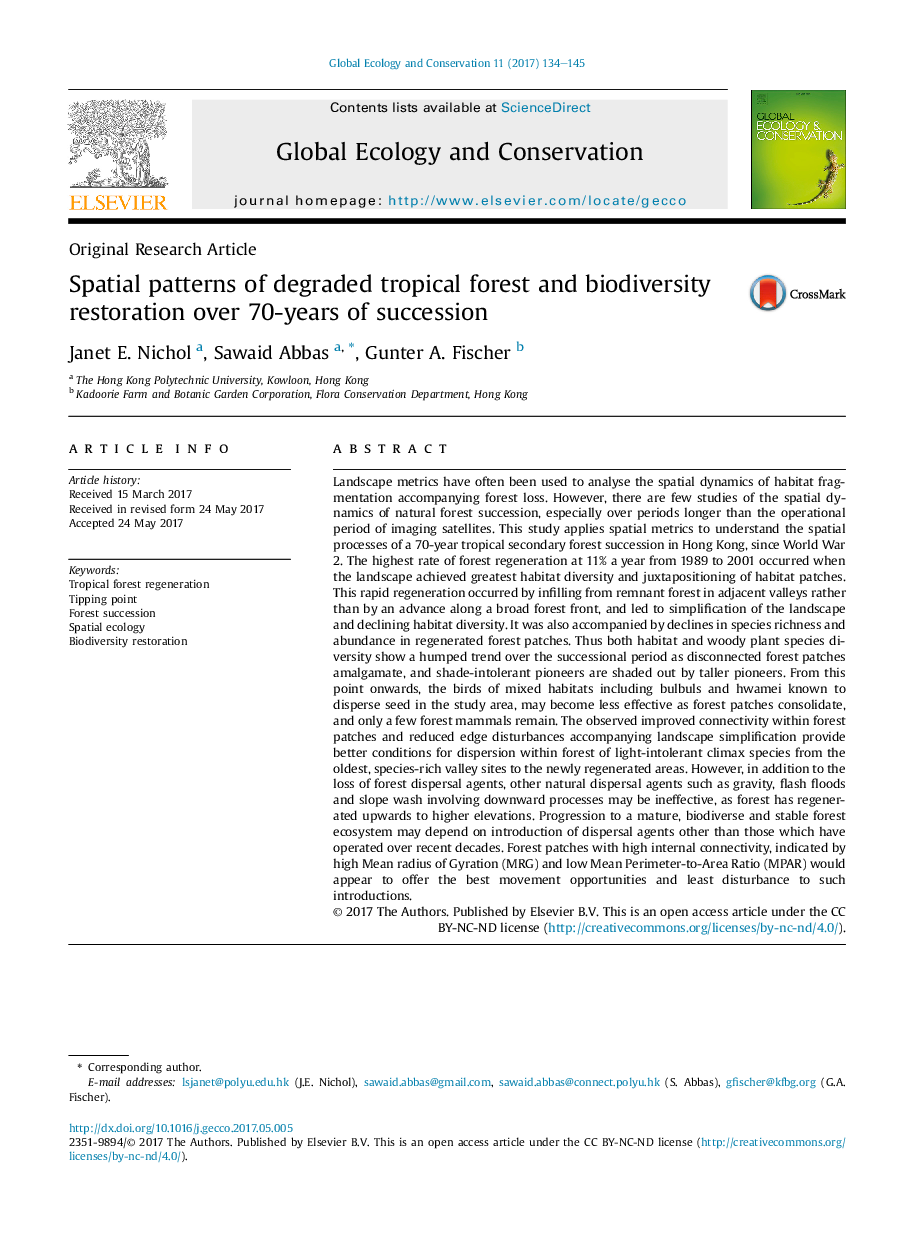| Article ID | Journal | Published Year | Pages | File Type |
|---|---|---|---|---|
| 5742406 | Global Ecology and Conservation | 2017 | 12 Pages |
Abstract
Landscape metrics have often been used to analyse the spatial dynamics of habitat fragmentation accompanying forest loss. However, there are few studies of the spatial dynamics of natural forest succession, especially over periods longer than the operational period of imaging satellites. This study applies spatial metrics to understand the spatial processes of a 70-year tropical secondary forest succession in Hong Kong, since World War 2. The highest rate of forest regeneration at 11% a year from 1989 to 2001 occurred when the landscape achieved greatest habitat diversity and juxtapositioning of habitat patches. This rapid regeneration occurred by infilling from remnant forest in adjacent valleys rather than by an advance along a broad forest front, and led to simplification of the landscape and declining habitat diversity. It was also accompanied by declines in species richness and abundance in regenerated forest patches. Thus both habitat and woody plant species diversity show a humped trend over the successional period as disconnected forest patches amalgamate, and shade-intolerant pioneers are shaded out by taller pioneers. From this point onwards, the birds of mixed habitats including bulbuls and hwamei known to disperse seed in the study area, may become less effective as forest patches consolidate, and only a few forest mammals remain. The observed improved connectivity within forest patches and reduced edge disturbances accompanying landscape simplification provide better conditions for dispersion within forest of light-intolerant climax species from the oldest, species-rich valley sites to the newly regenerated areas. However, in addition to the loss of forest dispersal agents, other natural dispersal agents such as gravity, flash floods and slope wash involving downward processes may be ineffective, as forest has regenerated upwards to higher elevations. Progression to a mature, biodiverse and stable forest ecosystem may depend on introduction of dispersal agents other than those which have operated over recent decades. Forest patches with high internal connectivity, indicated by high Mean radius of Gyration (MRG) and low Mean Perimeter-to-Area Ratio (MPAR) would appear to offer the best movement opportunities and least disturbance to such introductions.
Related Topics
Life Sciences
Agricultural and Biological Sciences
Ecology, Evolution, Behavior and Systematics
Authors
Janet E. Nichol, Sawaid Abbas, Gunter A. Fischer,
